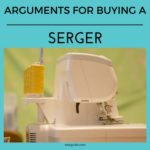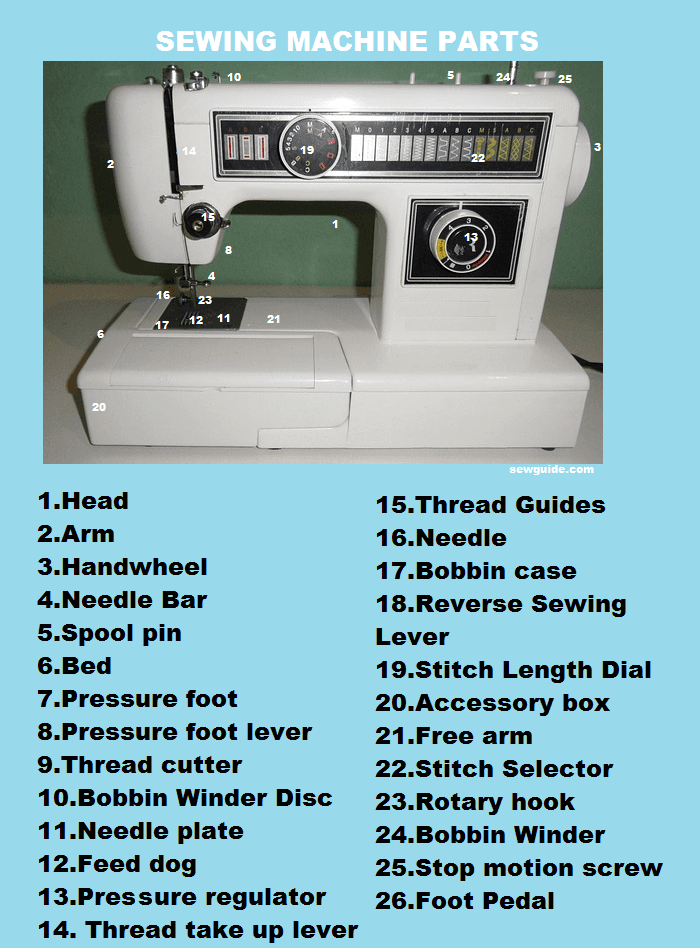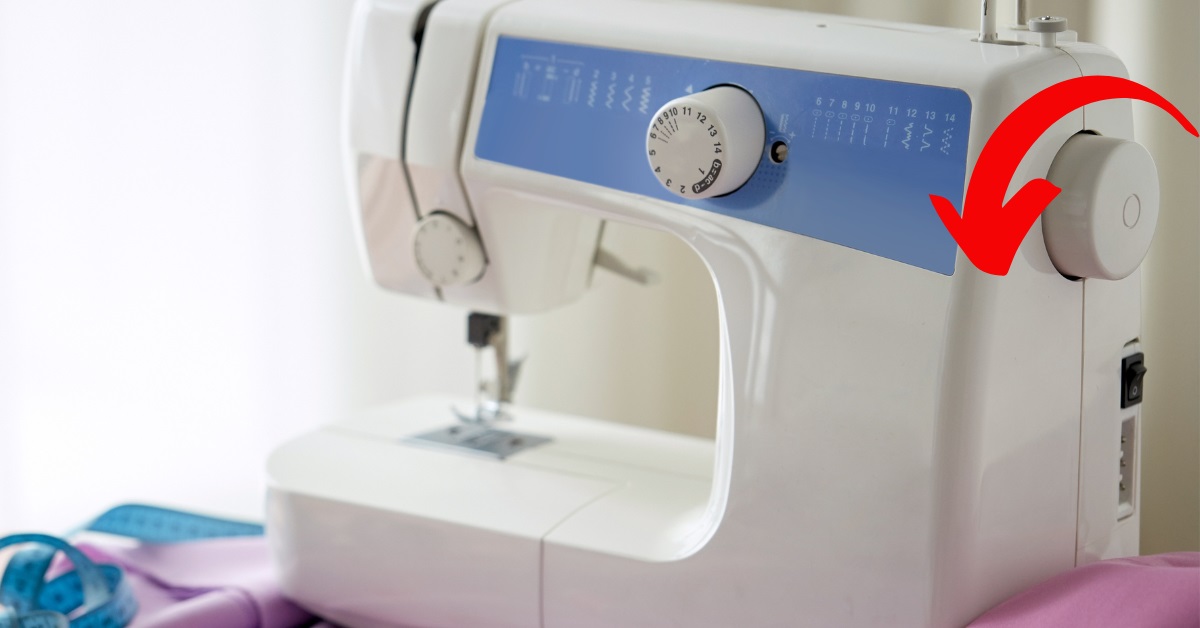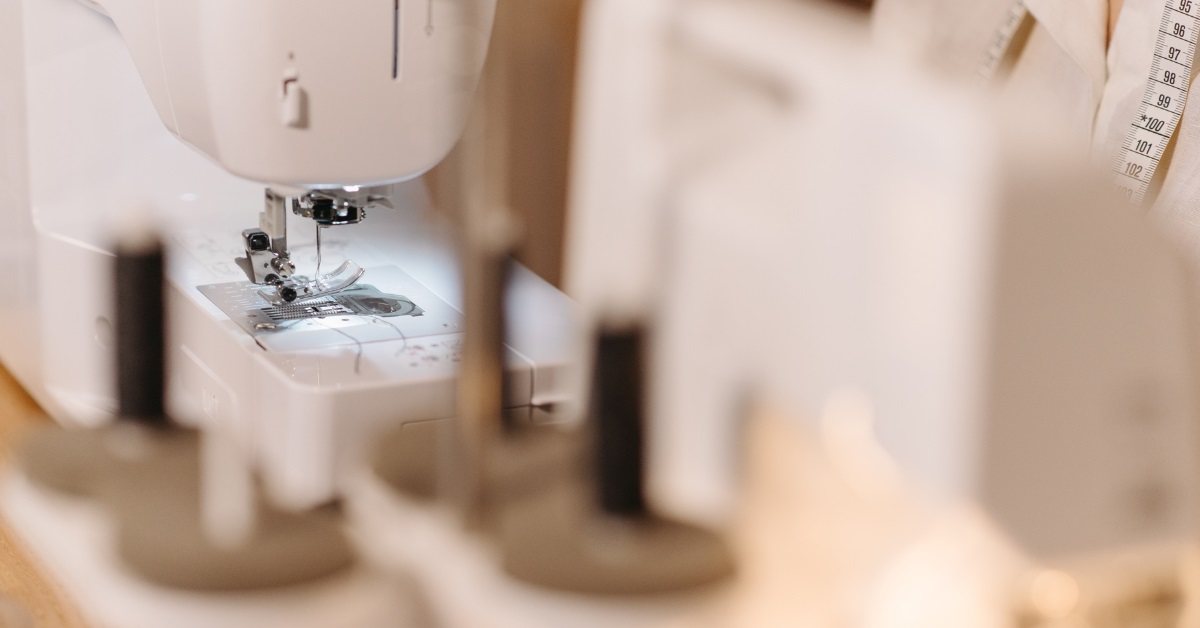- Which sewing machine is best for home use for beginners? (How to choose & what to buy)
- Sewing machine manuals (Free): Get your copy if you do not have one!
- Sewing Machine Needle sizes
- How to use a Binding presser Foot on your sewing machine
- How to use Needle Threader
- Zipper foot : 3 types and how to use them
- Broken-Needles – Can you prevent this?
- Blind Hem Presser foot
- Darning foot (Free motion embroidery Presser foot)
- Satin Stitch Presser Foot : 4 types for perfect satin stitching
- How to use a Ruffler foot on your sewing machine
- How to use a BRAIDING Presser FOOT on your sewing machine
- All about Bobbins & How to use them properly on sewing machines
- Sewing Machine hardware problems and what to do.
- How to use a 1/4 inch Seam Foot (Sewing Machine Foot tutorial)
- Gathering presser foot (Shirring foot)
- How to use a WALKING FOOT :Sewing Machine Presser foot tutorial
- Simple guide to using your Sewing Machine to sew starting steps for beginners
- Industrial Sewing machine – 10 criteria to decide whether you need to buy one ?
- Bodkin as a Sewing tool : Different uses
- 20 Different Types of Sewing Machines
- Sewing Machine Tension Adjustment – All that I know!
- Top 7 Sewing Machine Brands
- Edge Joining Foot / Stitch in the Ditch foot – 8 different uses
- Who invented the Sewing machine ? ; A walk through history
- Presser Foot : A detailed 33 Sewing Machine Feet Guide
- Correct way to use a HEMMER FOOT
- Sewing Machines & Accessories
- Do you need a serger (5 questions answered on buying one)
- 13 CUTTING TOOLS you need for sewing
- How to thread a sewing machine (Best tips)
- Sewing Machine Maintainence (3 steps process)
- Types of Sewing Machine Needles
- Sewing Machine Parts ( A guide)
- Buying a Used Sewing Machine ? (7 factors to consider)
- Sewing Thread – 25 types (& How to select the best one)
- Sewing Machine not stitching properly? (Easy fixes for 25 common problems)
- 45 Sewing tools you may need to start to sew (Some of them are essential)
A sewing machine sews when the top and bobbin threads interconnect, forming a continuous loop connecting fabric layers.
This youtube video correctly demonstrates the formation of stitches by a sewing machine -how a bobbin catches and knots a thread to form a stitch that holds pieces of fabric together.
Sewing Machines have an electric motor that works the machine. You have control of the operations by way of the foot pedal. The advantage of this foot pedal is that both hands are free to manipulate and move the fabric.
The foot pedal of your sewing machine controls the motor speed, so if you increase the amount of pressure you put on it, the machine will speed up stitching, and if you reduce the pressure on the pedal, the machine stitching will slow the speed of stitching. The upper thread and the bobbin thread should meet precisely in the middle of the fabric layers for perfect stitching.
Since the first sewing machine was invented by an Englishman named Thomas Saint in 1789, there have been many different types of sewing machines with different functions and capabilities. But the primary use of a sewing machine remains the same – to replace hand sewing efficiently.
The working of a sewing machine varies according to its type and functionality.
How does your sewing machine work according to its type?
Sewing Machines can be categorized into 4 basic kinds according to their operations. Manual sewing machine, Mechanical sewing machine, Electronic sewing machine and computerized sewing machine.
Manual sewing machine is the basic type of sewing machine that you can operate with a treadle. You can nowadays find these machines in the vintage category, and those who have them are fitting theirs with electric motors so that they can keep the old-fashioned sturdy workhorses of yesteryears at the same time, work efficiently and fast.
It is physically taxing to operate a manual sewing machine for a long time, if the motor is not there.
Mechanical sewing machine is the most commonly bought sewing machine with knobs and dials to adjust stitch length and tension. Most of them come with buttonhole stitching, utility stitches, and a few decorative stitches. Most people have a mechanical sewing machine as their home sewing machine. It is easy to operate.
Electronic sewing machines are more of an automated version of mechanical sewing machines with simple buttons and even LCD screens. They are mostly automated with stitch lengths and widths, which can be set automatically. They will have convenient features like an automatic one-step buttonhole and different overlock stitches.
Computerized sewing machine is the absolutely perfect model of a sewing machine that has most of everything you want. It can download patterns, memorize operations, perfectly synchronize speed and needle functions, and give precise stitching. Different sewing operations are done with perfect coordination without you bothering your head about it. They have touch screens and USB ports to input sewing patterns and embroidery designs.
Most of the work on a computerised sewing machine is done automatically, and sewing is all the more joyous because of the smooth operations. And all this comes with a heavy price tag, of course.
According to the functionality, there are sewing machines that work in different ways. They are Sergers, Embroidery sewing machine, and Industrial sewing machine.
Overlocker/serger
Sergers or overlockers are basically used to finish seam edges. The serger finishes the seams in one go along with the seam stitching and cutting the seams. Checkout the post on serger to know whether you need to buy a serger or not.

Embroidery sewing machine
These are sewing machines that are used to create detailed and intricate embroidery designs and monograms. The embroidery machines can be computerized as well, making it easy to download or upload designs and do the work instantaneously.
Industrial sewing machines
These are heavy-duty sewing machines used by professionals. If you are interested in starting a sewing business, this is the sewing machine you should buy so that you can make things with perfection. These machines are heavy-duty machines capable of sewing through thick fabric layers. They can be used to make accessories like bags made with thick fabrics like denim and leather with perfection.
By the time you read this, you probably have bought the sewing machine after considering everything – your budget, what to sew it with, who is going to sew with it etc. Checkout this post on the things to consider for buying a beginner’s sewing machine
You will also have a comfortable table on which to operate your sewing machine. This is very important. If you are going to be sewing for a long time, you should be comfortable doing it; otherwise, backache will make you stop operating it soon.
Checkout this DIY plans to make a sewing table if you are the DIY kind who likes to work with wood too other than fabric or buy a perfect one on which you can comfortably rest your elbows without straining your back and neck.
What your sewing machine manual says.
After the sewing machine table with the sewing machine is set up properly, take up the sewing machine manual which comes with it and read it thoroughly, cover to cover. This is the bible you should always have at hand because everything related to your particular sewing machine is mentioned in this.
Checkout this post where you can download the sewing machine manual and print it out if you have not got the manual.
Some more tips for beginners on using the sewing machine can be found here.
How does parts of your sewing machine help in its working?
Different parts of your sewing machine and the pressure feet and other accessories you have got with the machine, all play important role in how your machine works.
This post will give more details on the sewing machine parts and the pressure feet. Another post that may interest you is the different sewing tools you will need. Not all of them at the same time, but for specific purposes, you may need to buy some of them.

Thread
Good quality thread is a necessity, not an option, for the optimal working of your sewing machine. Checkout this post on the best thread to use with a sewing machine for more details on this. Suffice to say different types of fabrics call for different types of sewing threads. A basic knowledge of this is necessary for smooth sewing.
Needle
You also must know that sewing needles are not made equal. There are different types of sewing needles available for different types of sewing/fabric.
Checkout the post for more details on which needle to use with your sewing for more details on this. You should also know how to replace the needle properly. All the experts replace their needles after 6-8 hours of sewing with it. They do not want bad needle to destroy their sewing.
Checkout this post on the correct order of threading your sewing machine; this is a very important element in correctly operating the sewing machine without problems.
Most of the problems when working the sewing machine can be solved by correctly threading the machine. One misstep and your sewing will go all awry. Ensure that when you are threading the machine, the presser foot is raised and the needle is in the highest position.
Bobbins
Checkout the sewing machine manual on how to put the bobbin thread case in your particular machine. Winding the bobbin also will be different depending on the type of bobbin case. It is important to never ever hurry when winding the bobbin. Go at a steady and medium speed for good winding.
Insert the bobbin in the case (drop in or front loading /push type) according to the machine. Take out the bobbin thread through the gap as per the directions.
Move the hand wheel towards you gently. This will bring up the bobbin thread to the pressure feet area. Take this thread to the back of the machine along with the needle top thread before you keep the fabric under the pressure feet to start stitching.
What happens when you start to sew with your sewing machine
Turn the handle (balance wheel) towards you to place the needle inside the fabric and start giving pressure on the foot pedal. Increase the pressure slowly.

Use both hands to gently guide the fabric.
Your sewing machine manual will have an illustration of the different types of stitches available in your machine. It is a good idea to make a sampler of these stitches and keep so that you have a ready reckoner when you want to make some decorative stitches.Most home machines have them displayed on the panel.
Some general rules when working the sewing machine are as follows
- The pressure foot is kept down, when the sewing starts.
- The handwheel can be turned towards you, when you start, to get the sewing machine moving.
- The fabric need not be pulled when sewing. The pressure feet will automatically push the material forward. If it does not there is something wrong. You may have to manipulate and guide the fabric in case of certain types of material but other than that the movement should be fluent.
- If the fabric gets stuck when sewing, stop the sewing by taking the foot off the foot pedal and gently turn the handwheel towards you. Most often this will un-stuck the fabric.
- Handle the fabric gently. Try to keep the whole fabric on the sewing machine table; if it hangs down as you sew there may be puckers and snags and damage to the cloth.
- Try to maintain a constant speed on the pedal.
- Do not operate pedal unless the cloth is kept on the machine under the needle; the thread will snag on the bobbin.
- Ensure that your machine is kept in a place with adequate light.
- To turn at the corner, pivot the fabric with the needle still in the fabric. This way you will not miss any stitches.
- When you finish take up the needle to the highest point, take up the pressure foot lever and gently remove the fabric. You can cut the thread with the thread cutter in the machine if it is available. Take the thread again to the back of the pressure foot.
- Water or any liquid can damage your machine, so keep it covered at all times. Here is a pattern and tutorial for a sewing machine cover – How to stitch sewing machine cover.
- After the sewing is over remember to plug off.
Tension
This is the balance between the upper thread and the bobbin thread. If one is off the whole stitching looks bad.
You can check the tension of your machine by stitching a straight line with different coloured threads in the bobbin and the top thread .
If the bobbin thread shows on the top of the fabric or the top thread show on the back of the fabric it means that the tension is off on your sewing machine.
- If the needle thread shows under the fabric tension on the bobbin it means that the top thread is too tight or that on the needle thread is too loose, so tighten the needle thread tension.
- If the bobbin thread shows on the surface (top) of the fabric, it means needle thread is too tight, or that on the bobbin thread is too loose, loosen the needle thread tension.
Another method is the make a straight line of stitching on the bias of a fabric (diagonally). Stretch the stitching line by pulling it with your hands, If the stitching breaks you can be sure that the stitching tension is not right. On the bias, a good stitching will not pop. If the top thread has broken, loosen the tension dial a little bit and see. If the bobbin thread has broken tighten the needle tension a little bit. Try stitching again.
Unlike the old bobbin where the tension screw was visible today’s machines come with inbuilt bobbin cases. You may need to learn how to adjust the bobbin tension in these bobbin cases as well, which maybe of use occasionally.
When sewing with delicate fabrics like sheer fabrics, polyester and nylon keep paper underneath for more stability; You can remove the paper after the sewing is over.
If the sewing machine shows up any problems along the way consult your sewing machine manual first or you may find some tips here on the 18 frequently asked questions and their answers on the common sewing machine problems.
A proper sewing machine maintenance is of utmost importance, ofcourse. Checkout this post on the best way to do (steps) the sewing machine maintenance.


Thank you for the information .I have Tension problem with sewing.
Found good artical. help full.
I just started, but it’s look so hard
Excellent. I could understand so easily. Now, stitching is very easy for me because of your tutorial.
Thanks a lot!
Thanks for ones marvelous posting! I seriously enjoyed reading it, you might be a great author.I will ensure that I bookmark your blog and will come back in the foreseeable future. I want to encourage you to ultimately continue your great writing, have a nice morning!
Ive just begun to sew after many years. I used to make mine and my girls clothing. They are grown and I am 74. I had forgotten how much I enjoyed sewing. I was so glad to find your site on-line I was looking for tips and advice, and this site is perfect. By any chance do you have a book for purchase with sewing information? If not I will continue to refer back to this site for help.
Hi Shirley
No book, sorry. You can search for what you want to know in this post (as much as is there : ) Posts on Sewguide
Best wishes
The topic is clearly discussed and itemized thank you for making a very informative topic.
I would like to ask permission from you to copy some text from your website about sewing for the modular lesson that we will be making for our students. This pandemic COVID 19, does’nt allow us to have a face to face class interaction activity so modular lessons are encourage to continue the learning process of our students. These modular lessons will be distributed to the students for free since I am a public teacher and most of our student specially in the TECHNICAL VOCATIONAL TRACK in the senior high, their families have meager income . Your positive response would help a lot in educating our youth Thank you very much.
Hi Abdul
You can go ahead; glad to be of help to your students. Best wishes